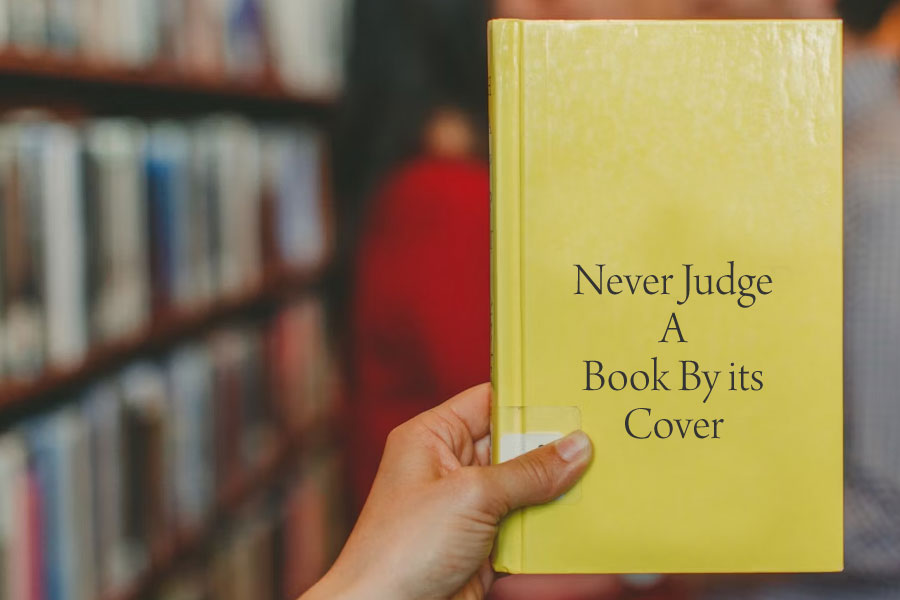![]() I am a firm believer of an old adage which says “Don’t judge a book by its cover.” Nonetheless, in these contemporary times, and especially in the literary domain, this saying has lost some of its inherent, deep meaning, as most readers succumb to visually appealing covers which unfortunately is also the primary sales tool when it comes to book marketing. While this strategy may work once or twice, over a period of time, it can backfire, leading to disappointment amongst readers or infuse a sense of being misled. No wonder then modern book covers are tagged double-edged sword. This analogy becomes even more conspicuous in case of self-publishers who often make use of AI book cover generator or book cover creator. Quite often, these images have little or no relevance to the story or genre.
I am a firm believer of an old adage which says “Don’t judge a book by its cover.” Nonetheless, in these contemporary times, and especially in the literary domain, this saying has lost some of its inherent, deep meaning, as most readers succumb to visually appealing covers which unfortunately is also the primary sales tool when it comes to book marketing. While this strategy may work once or twice, over a period of time, it can backfire, leading to disappointment amongst readers or infuse a sense of being misled. No wonder then modern book covers are tagged double-edged sword. This analogy becomes even more conspicuous in case of self-publishers who often make use of AI book cover generator or book cover creator. Quite often, these images have little or no relevance to the story or genre.
Book Cover – Trends & Tropes
Without sounding prejudiced or against fancy book covers, I believe deceit can only go as far as fetching short term success. But this is what most publishers ( Self & Traditional ) desire— opt for an easy way to pique reader interest or grab instant attention from thousands of books lined up in brick-and-mortar bookstore shelves or online marketplaces. Once that initial interest is generated the rest of the commercial accomplishment obviously relies on the actual content of the book. If the cover doesn’t complement the story / genre, the book will eventually fail to achieve the desired goal, damaging the credibility of the publisher as well as the author.
Clichéd Covers – Is it a Perfect Solution?
Traditional publishers generally follow reader psyche, and therefore their book cover design is strictly based on genre. Although it may have clichéd elements, it does offer the reader a sense of what they can expect from the book. For example, a lone figure silhouetted against a street lamp, building or a shadow of a human being against city ruins provides a hint that it belongs to mystery or dystopian genre. While it may sound like a good idea and a practical one too, these genres also have sub-categories which are extremely different from its parent. In such a scenario a reader may feel cheated yet again. Moreover, by adopting some of the classic book cover ideas, the concept of “Originality” is compromised.
Chaotic Designs – Confusion or Cathartic
Complex cover designs are mostly offered by self-published / first-time authors. And not without a reason! Hundreds of literary blogs advise aspiring writers to hire a professional designer instead of searching for “how to make a book cover on your own”. This typically results in creative tsunami. Just because the author has paid substantial amount, he / she feels entitled to offer absurd suggestions. The question is, do these meaningless ideas actually translate into a complementing, attractive and a genuine cover? The answer is no. In fact, most of the times, the design ends up being unnecessarily chaotic and complex, and the reason why traditional publishers do not consult writers when it comes to cover designing. It is their marketing team which advices and approves the design.
Do you buy a book if you find its cover attractive?
Studies have shown that the majority of the readers ( 80% ) fall for an artistically designed cover, at least while browsing ( online or offline ). But it is also true that this number falls drastically once these buyers finish reading the blurb.
Book Cover – Impact of Colours
Imagine a blank book cover with just the title. Simply unthinkable! The reason being it neither generates any feelings nor does it offer an insight. Apart from images, colours also play a major role in seducing readers because they reflect distinct emotions.
The Power of the Blurb & Writing –
So, as a reader, how do you select a good book? Definitely not by the look of the cover art! Of course a creatively designed cover may pull you in instantly, but it doesn’t guarantee good writing. Instead, you should focus on the blurb and read free chapters. The blurb, which is a short description on the back cover, is often a much more reliable indicator of a book’s content. A well-written blurb and free chapters will give you a sense of the story’s plot, theme, and how well the characters have been developed. Remember, the beauty of the book lies within the pages.
P.S. The proverb “Don’t judge a book by its cover” resonates well with books, but it loses significance when applied to humans.
Buy N.Lalit's Books | Shorts - Amazon | Kindle

